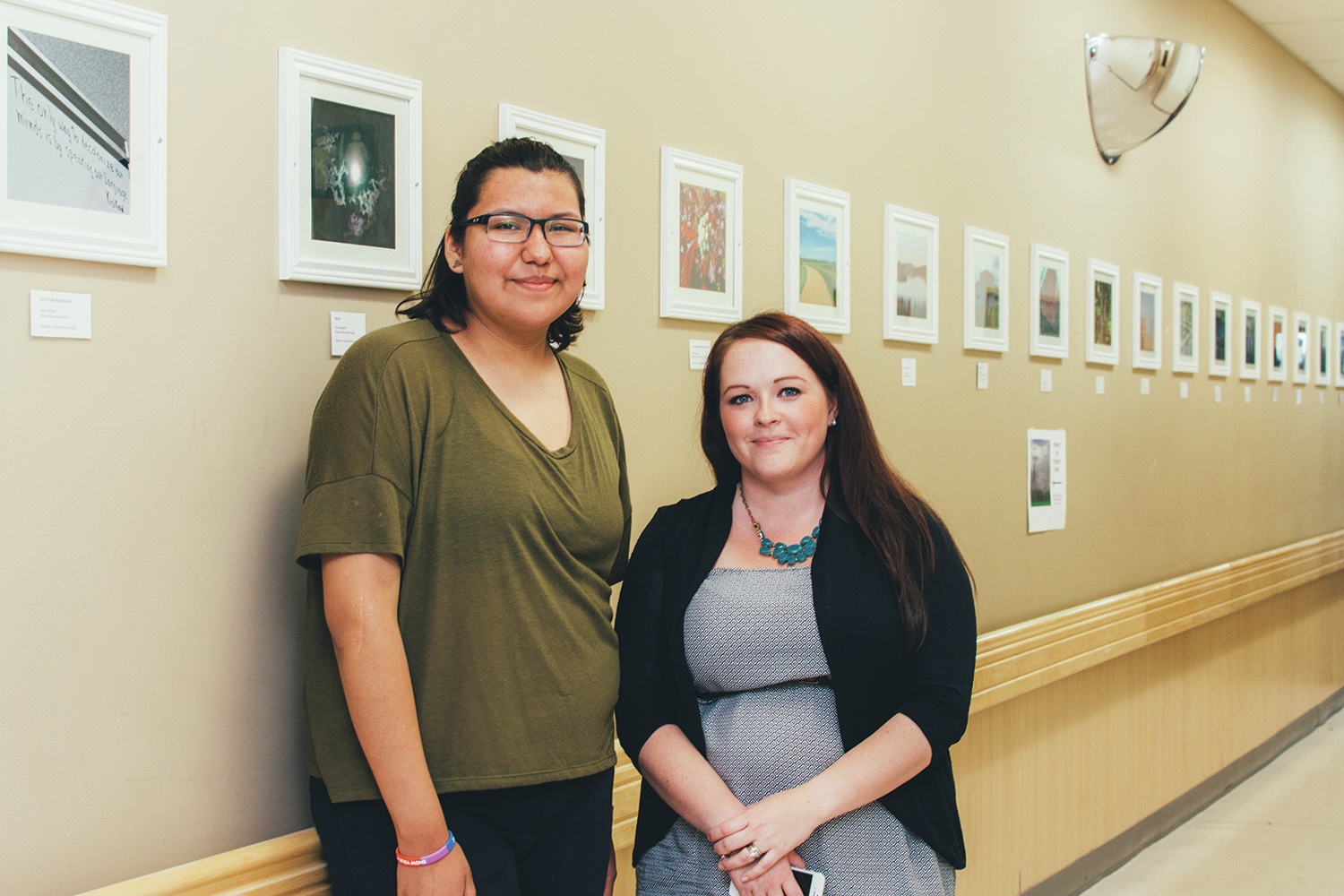Red Deerians get a private look into the community with the unveiling of the new Maskwacis Youth Photovoice Exhibit at the Red Deer Regional Hospital Centre.
The project started with 11 youth from Maskwacis ages 15-19 going around their community and take pictures, capturing how they personally view and see their community as strong and healthy.
“We worked with four youth, mainly,” said Melissa Tremblay, research assistant with the University of Alberta’s Pediatrics Department. “We also engaged seven youth from the Ermineskin Junior Senior High School. Different schools in Maskwacis identify these youth as being really motivated, committed and suitable for the project.”
Tremblay has worked with Dr. Lola Baydala, a pediatrician and professor who works at the Maskwacis Health Centre for the past five years.
After working within the community and becoming accustomed to the people that live in Maskwacis and learning about their personal views on the resilience and strength of the community, Tremblay said the project started in June of last year. She added they worked with Bert Crowfoot, a First Nations photographer who is best known for his photography of Aboriginal events and cultural knowledge, and Ingrid Kellen, a photographer from Maskwacis.
Kellen and Crowfoot worked with the youth in training them on photography.
“We’re really appreciative to have the opportunity to have them here at the Red Deer Hospital permanently,” said Tremblay, of the exhibit.
Tremblay said that the pediatrics department at the U of A have other exhibits in different hospitals such as the Wetaskiwin hospital, the U of A’s hospital and at its faculty of extension.
“I’m really thankful for this experience,” said Maria Buffalo, one of the youth photographers who was part of the project. “For the people I’ve met and the places I’ve been and how well received our pictures have been.
“It truly is something I’m very passionate about and I’m very happy that everyone else is enjoying it.”
Tremblay said the purpose of the project was to showcase the core values of strength, love and resilience within the community, because they believe that there are negative presumptions and stereotypes about the community outside of Maskwacis regarding crime and violence.
“We wanted to re-frame those preconceptions about the community by showing there’s a beautiful positive side to it,” said Tremblay.
The youth involved with the project worked for months, taking pictures, learning about their community and using the project as an outlet to voice their opinions.
“I didn’t know there was something that we needed, something so many people were excited for,” said Buffalo. “It’s showing how I see my community to other people and how they resonate with that. How that connects to them and how they stop and think, ‘Oh wow I’ve never seen that or I’ve never bothered to look at it that way’.
“That really connected with me, the support and how people were out there, like Melissa to give us opportunities and helps us. I believe it is very important to break the stereotypes and everything in media, the world and politics because we are a fast growing population and we’ve been here for a long time, going unnoticed.”
When asked about what she was most passionate about and what she wanted to share with people with her photography, Buffalo spoke about her love for nature and the earth.
“I think we could learn a lot from our Mother Earth, the teachings she gives us and I think that’s something people often take for granted, and we need to stop and pay attention to it because we only have one earth and one life and we need to take care of it.”
The exhibit was first brought to the attention of Allan Sinclair, the executive director at the hospital, by one of his colleagues and they believed it would be a good way of showing the hospital is welcome to all and is looking to improve its sense of inclusion.
“This, to us, is one of the ways we can reach out to the First Nations, Metis and Inuit,” said Sinclair. “Whether you’re from the culture, you’re interested in it, or if you know someone who’s from that background, we want to do the best job we can to be as inviting and as welcoming as possible.
“The more welcoming it is for a sub-population to come into the hospital and feel they’re welcome here, the better they’re going to be through their stay, and the better they’re going to be when they go back home.”
The exhibit is welcome for all to view on the first and second floors of the hospital.
student@reddeerexpress.com



